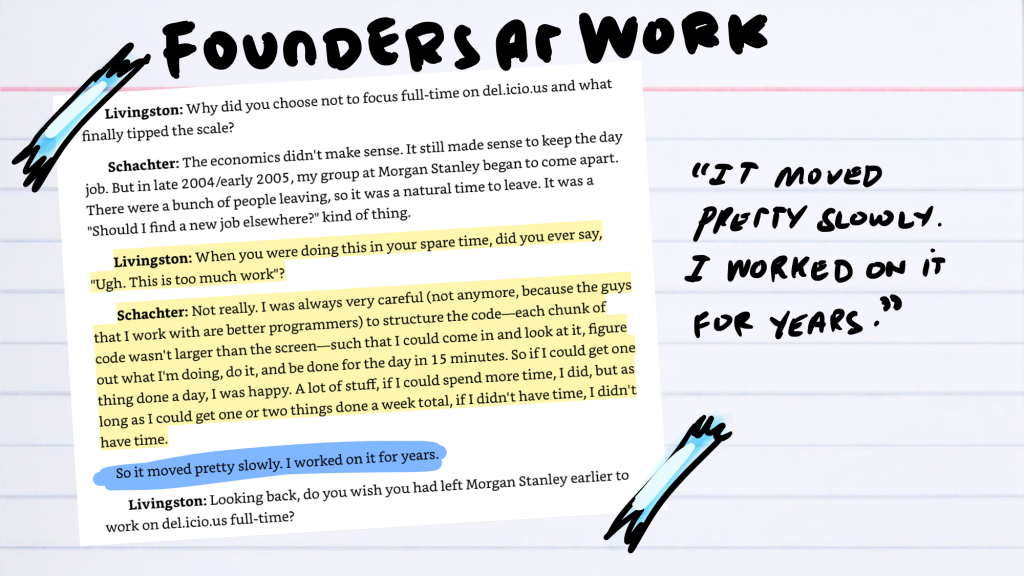41: “Crushing It” and other cool things
44: Speed round and podcast recommendations (Short Story Long, Knowledge Project)
Recapping our first 8 episodes in a speed round format (80 seconds each). Podcast recommendations: Short Story Long (w/ Tamara Dhia), Knowledge Project (w/ Barbara Oakley), and Industrial Strength (Joe DeFranco)
( 00:05:38 ) Speed rounds: First 8 episodes
( 00:20:24 ) Q: You can’t break necks easy?
( 00:24:38 ) Cool thing #1 : Tamara Dhia (Short Story Long)
( 00:31:46 ) Cool thing #2: Barbara Oakley (Knowledge Project)
( 00:33:42 ) Cool thing #3: Triple H (Industrial Strength)

How do you build anything? One chunk at a time
Do you have an hour every day to work on something? No? Okay how about fifteen minutes.
It will add up. Slowly, but it will.
In Founders at Work, Jessica Livingston interviews startup founders. There’s a lot of business wisdom and all that, but the best parts are those unpolished early days of companies. A lot of the companies are what you’d imagine watching HBO’s Silicon Valley or just from reading enough blog posts about tech.
It’s been a few years since I read the book, but one interview that’s been sticky over the years is the interview with Joshua Schachter, who created the bookmark manager del.iciou.us.
Break things into small chunks: Schachter broke things into small enough chunks that they’d fit on one screen and he could finish what he wanted to do in 15 minutes.
Figure out what you’re doing quickly: Don’t plan to revise your entire manuscript every time you sit down to work. Leave in the middle of something so you know where you’re starting.
“If I didn’t have time. I didn’t have time.”
That’s such a rare mentality these days. Usually it’s more like, “If I don’t have time… oh no.” Then it’s time to panic.
Why am I sharing this right now? In the past few weeks I’ve felt the urge to start working on this blog again. I started picturing what it could look like 5 years from now if I work on it consistently (and slowly). That all reminded me of the above excerpt. So I’ll start working on this again. One chunk at a time. One post at a time.
XX: Ces-pi-sode – How to make big changes by getting the small things right (Ces solo minisode)
(This is Ces.) I forgot I couldn’t record with Wally this week so I recorded a solo episode. I tried to talk through some ideas for future gaming life lessons videos.